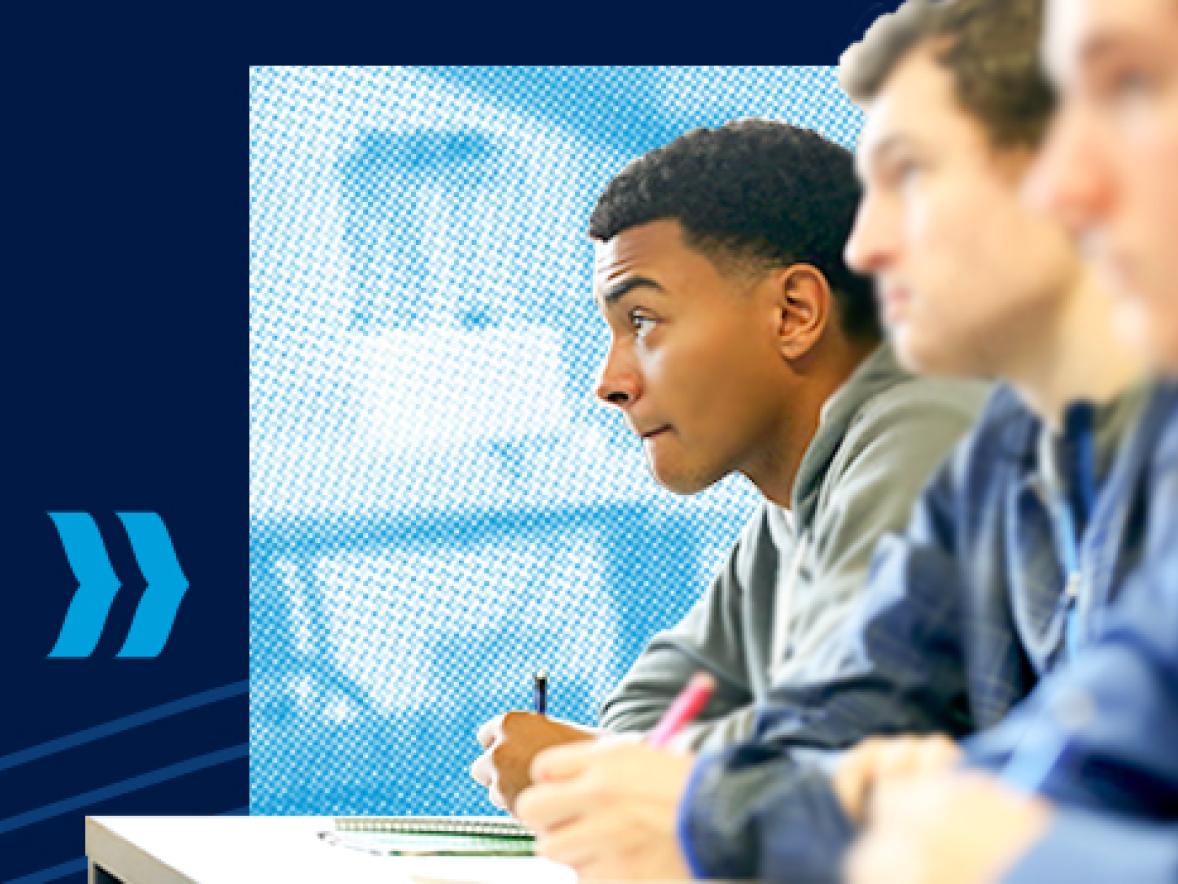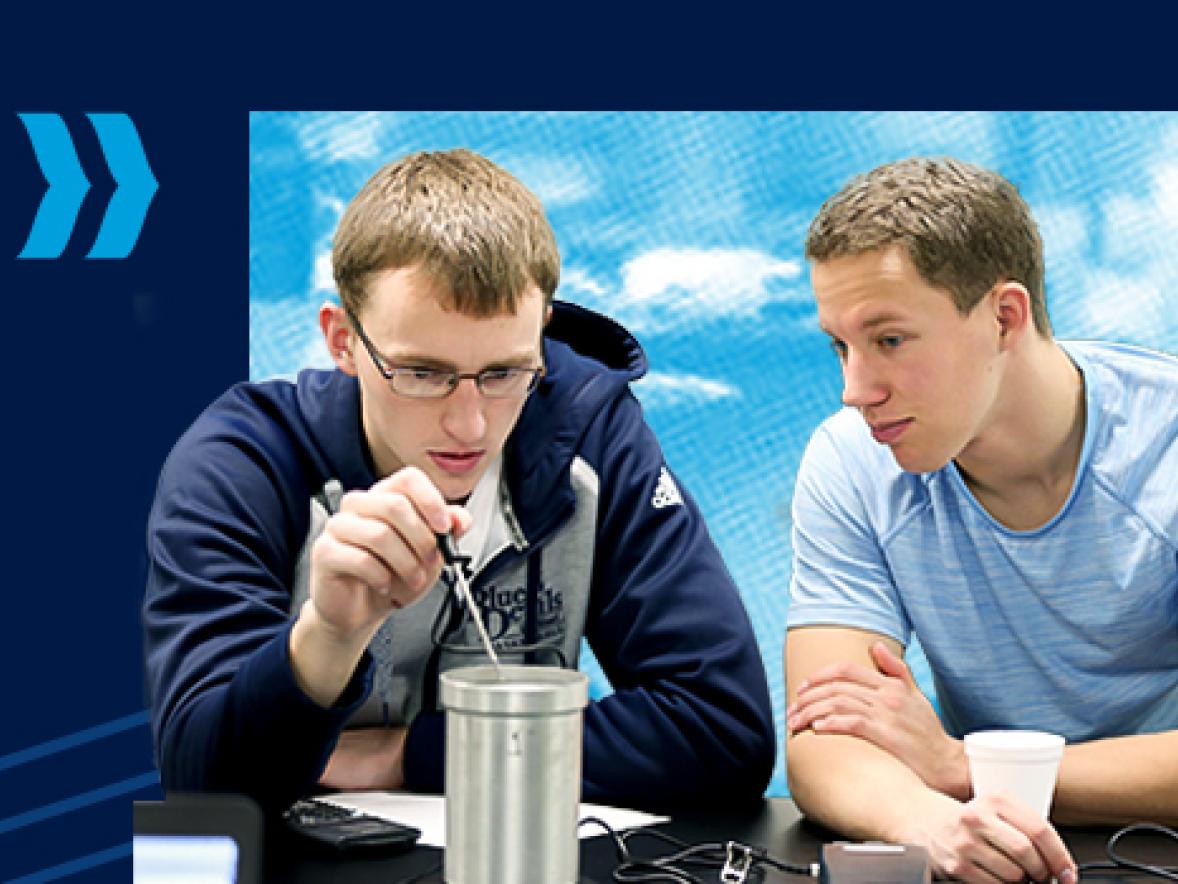Wisconsin winters may well have helped five University of Wisconsin-Stout students prepare for an international competition in Moscow, Russia.
The students earned first place for best presentation at the Ice Vision Hackathon, an artificial intelligence and computer vision competition. A hackathon is an event in which a large number of people meet to engage in collaborative computer programming.
The team’s task, using artificial intelligence and machine learning, was to develop software to help self-driving cars recognize traffic signs in the winter and varied winter conditions.
Twenty-nine teams competed from six countries, including Russia, China, France, Spain and South Korea.
UW-Stout students participating included:
- Kyle Lunde, of Holmen, senior, computer networking and information technology
- Simon Meyer, of Mound, Minn., senior, game design and development-art
- Christina Miller, of Green Bay, senior, computer science, game design and development concentration.
- Megan Southwick, of Green Bay, senior, game design and development-art
- Jonathon Terry, of Raymore, Mo., junior, industrial design
The team was led by Diane Christie, Bachelor of Science Computer Science program director and professor of computer science,

Lunde said students built image recognition software for the cameras in self-driving cars to recognize signs, particularly in wintry conditions. “It was complex, but we had a pretty good team,” he said. “We did a lot of research before.”
About 20,000 images from Russian winters were used as part of the dataset. The winters appeared a lot like Wisconsin’s wintry weather, Southwick said.
Southwick appreciated the chance to meet people and travel internationally. “I thought it was a great opportunity to expand my education,” she said. “I wasn’t sure what to expect going to Russia, but everyone was welcoming and friendly. There was a great sense of camaraderie within and after the competition.”
Lunde was surprised how large the Moscow downtown area was. “Everyone was extremely polite and very welcoming,” he noted.
Taking part in the competition encouraged him to learn more machine language, something he had wanted to do, and allowed him to experience another culture. “It was an excellent experience,” he added. “I would love to see UW-Stout compete again.”
Miller was impressed with the competitors’ talent and knowledge. “There was this amazing energy that kept us engaged,” she said. “Everyone was willing to work together. It’s an amazing experience with people from different countries. You think you understand where technology is. This was the cutting edge of technology.”
Most of the teams had graduate students or professionals, Southwick said.
UW-Stout also competed in 2017, garnering best presentation. The project then focused on developing visions using artificial intelligence for driverless cars.

Christie said the competition allowed students to use problem-solving skills, technical skills and creativity to design and implement a solution. Students were from different majors, all that emphasize communication and teamwork.
“This is why I believe our students did so well in the presentation,” Christie said. “They were able to look at the problem through their different backgrounds using multiple levels of abstraction and break it down to simple ideas. With this, they could communicate the problem and the solution they designed in terms that could be clearly understood.”
The 48-hour competition was held July 14-15 at the National University of Science and Technology, MiSiS, which also funded and sponsored the UW-Stout team. The winning team was from NtechLab in Russia. The other American team, Arizona State University, also took a first place for presentation.
“The development of unmanned vehicles is one of the most pressing challenges facing the developers of artificial intelligence systems around the world. Conducting hackathons aimed at finding effective solutions in the field of improving computer vision for autonomous vehicles allows you to get closer to creating unmanned systems,” stated Alevtina Chernikova, director of NUST MiSiS, in a news release.
The Ice Vision competition is designed as a satellite of a major Up Great technology contest to attract developers and the scientific community to create computer vision solutions for autonomous driving in winter conditions.
Up Great is a series of contests initiated in Russia as part of the National Technology Initiative to find breakthrough solutions to global technological challenges.
Students also experienced the culture while in Moscow, touring and visiting the Kremlin, Red Square, Gorky Park and other sites. “They got to try Russian and Georgian food. They lived in the dorms at MiSiS University, so they got the Russian student experience as well. They learned how to use the Russian subway and bus systems. It gave the students a great international experience,” Christie said.
UW-Stout is Wisconsin’s Polytechnic University, with a focus on applied learning, collaboration with business and industry, and career outcomes.
###
Photos
UW-Stout Ice Vision Hackathon team student members Megan Southwick, at left, Kyle Lunde, Jonathon Terry, Professor Diane Christie, Christina Miller and Simon Meyer pose for a picture at the competition held in Moscow. The team won a best presentation award. / Photos courtesy of MiSiS
The competition had 29 teams from six countries compete to help develop software for self-driving cars to recognize traffic signs during wintry travel conditions.





